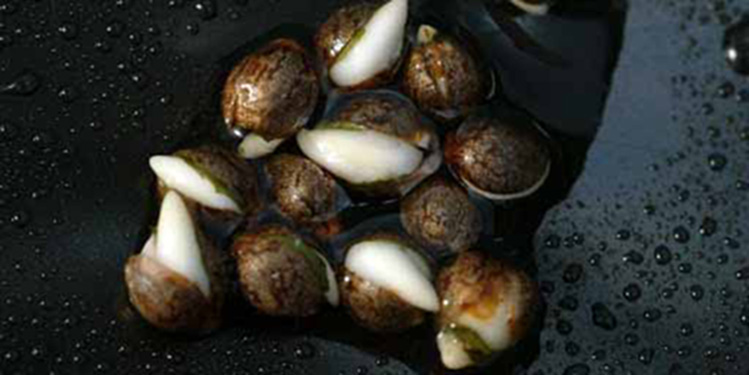The question of ‘seeds versus clones’ boils down the crop’s purpose, with advantages and disadvantages tied to both starting materials. Seeds provide growers a wider choice of strains, breeding opportunities and typically heavier yields. However, clones finish quicker and enable cultivators to produce a batch of genetically identical plants, supporting consistency across the entire harvest.
SEEDS
Cannabis seeds, when stored correctly, have a long shelf life and can be delivered around the world cheaply without damage. There are dozens of seed banks online that ship hundreds of strains worldwide, providing growers exceptional diversity when selecting genetics. Although seeds from the same batch will be inherently similar, subtle differences will become evident as individual plants mature.
Seeds take a month to germinate and transcend the seedling stage. However, this slow start above ground typically hides substantial subterranean progress. When grown from seed, cannabis produces a taproot which digs deep into the growing medium, from which secondary roots shoot laterally to cover as wide an area as possible. This enables the plant to access as much water and nutrients as possible, with the ability to reach far underground when none is available at the surface. An extensive root system also anchors plants into the ground, to support vertical growth and prevent them being uprooted.
The height of plants will vary between seeds from the same parents. These variations are beneficial as plants adapt to their environment, with some thriving in conditions where others falter. This enables cultivators to select the best males and females for breeding, so strains develop through (un)natural selection to flourish in a grower’s setup. Through this painstaking process proprietary genetics can be created, which provides producers a unique selling point in an increasingly saturated market. Propagation programmes often give rise to exceptional plants, with unique terpene profiles or cannabinoid ratios, which can be kept as mothers for clones.
CLONES
Cuttings from a mother plant provide growers exactly the same exceptional characteristics, and can be reproduced a multitude of times before succumbing to stress. When taking cuttings, cultivators must unsure the mother plant is healthy and free from pathogens that could infect their grow. This is particularly important in the case of HPlvD, which is largely asymptomatic, but can quickly spreading through commercial cannabis circles.
As clones of one another, cuttings from the same mother should grow at a similar pace to produce an even canopy. This enables growers to maximize their space and ensure plants receive the same amount of lighting, without one dwarfing another and sapping its resources. Theoretically an even canopy should lead to higher yields, with growers often training plants to create one through trellising and ‘screen of green’ techniques.
When taken from a mother plant, cuttings need to be dipped in a rooting agent and placed in a well-lit humid environment above 20 °C. This should instigate root development, but cuttings will remain fragile and vulnerable to climate fluctuations until a hardy root system has formed.
Although seedling size, cuttings are biologically mature and will show vertical growth quicker than plants grown from seed. Although the development of cuttings will not be as vigorous, the end result is more predictable and provides greater certainty for commercial operations.
SEEDS AND CLONES
Clones, once transplanted successfully, can be easier to raise than plants grown from seed as cultivators can bypass the vegetative growth stage – focussing on one light cycle and one potassium heavy nutrient solution. Unfortunately, as a photoperiod plant. cannabis does not naturally live longer than a year and when kept alive artificially, as in the case of mother plants, genetics weaken over time and eventually fail. This does not render mother plants ineffective, as they can be kept alive for years, but young mothers produce the healthiest cuttings and should be introduced every six to nine months.
To create a stable of potential mother plants, producers need to grow cannabis from seed and the keep the best in the vegetative stage. Specialized cannabis nurseries exist, focussing solely on starting materials, but their use increases contamination risks and creates a dependence on others.
Seeds and clones both have their place in cannabis cultivation, but relying too heavily on either can create issues. For more consistent harvests quicker, clones are the way to go. However, many swear that plants grown from seed produce higher quality flower. Both have advantages and disadvantages, but it is rarely an either-or decision, so savvy growers should combine the two for a more robust plant pipeline.


